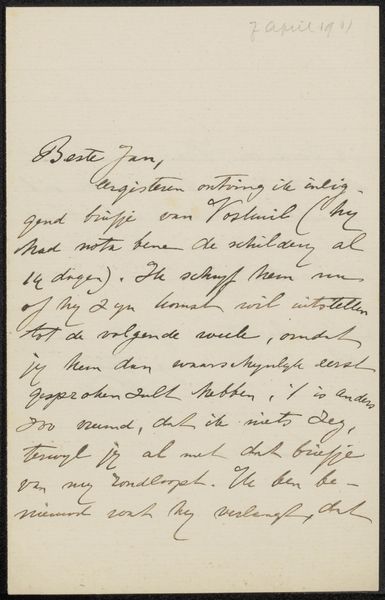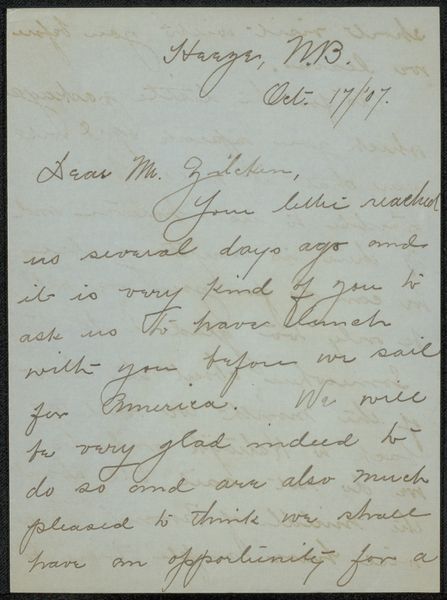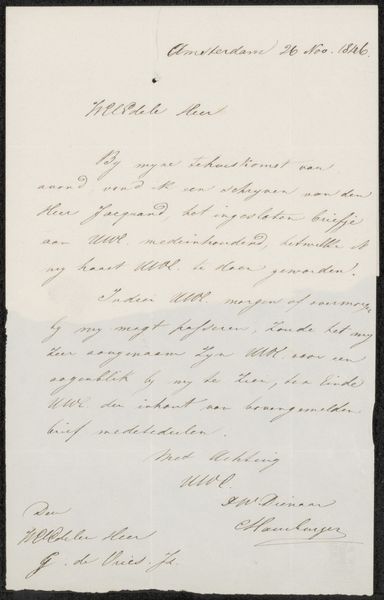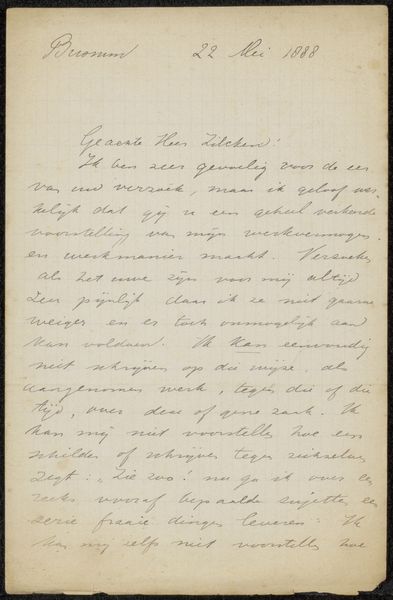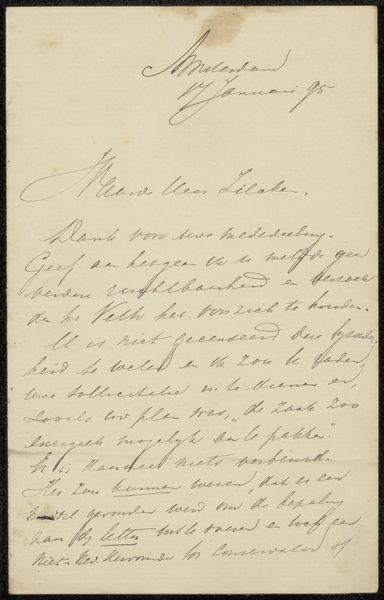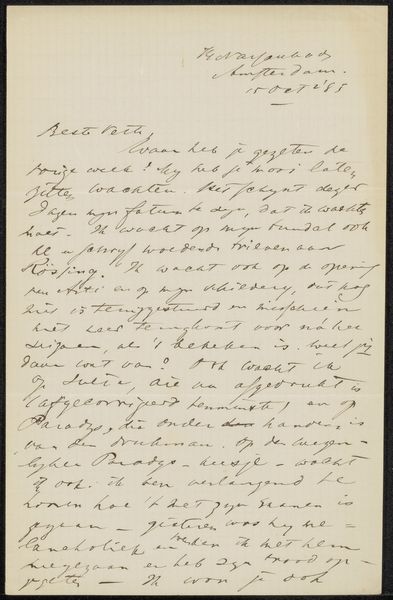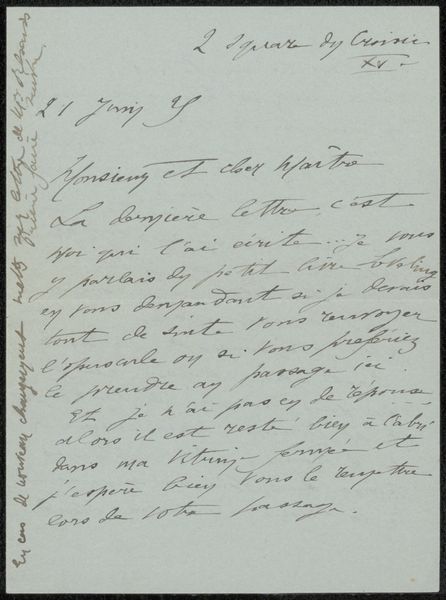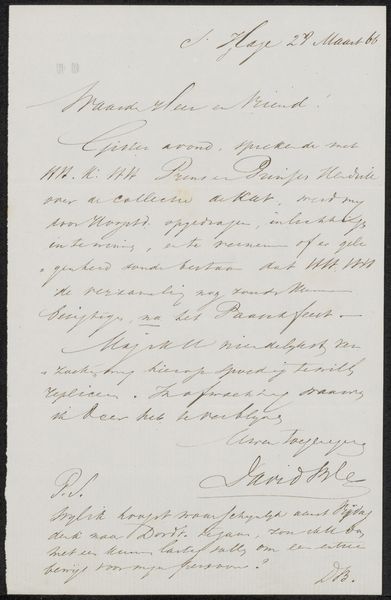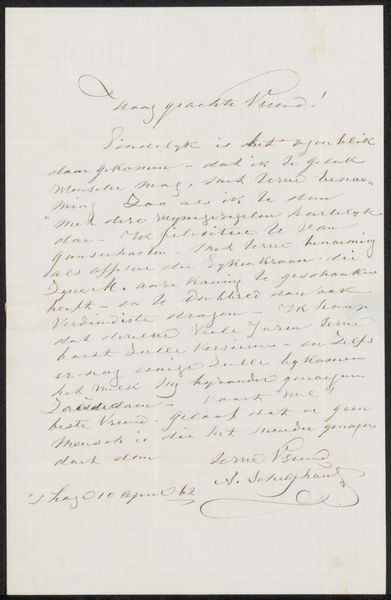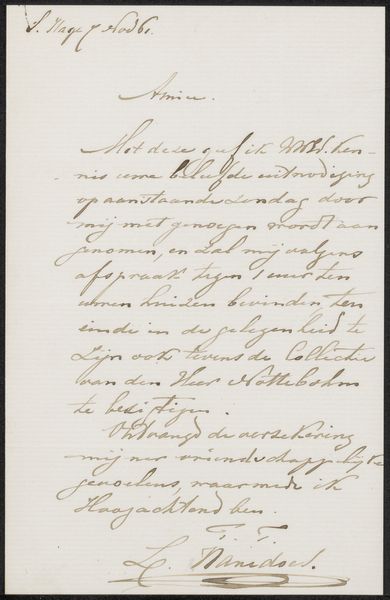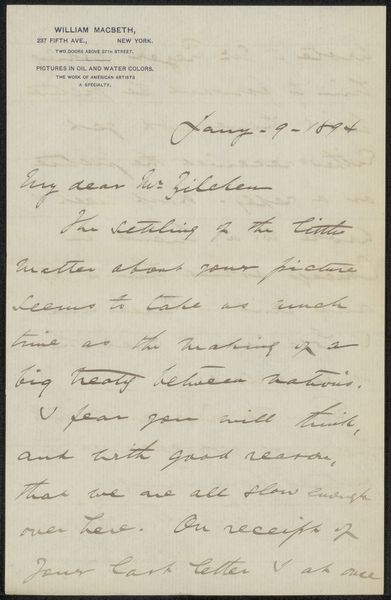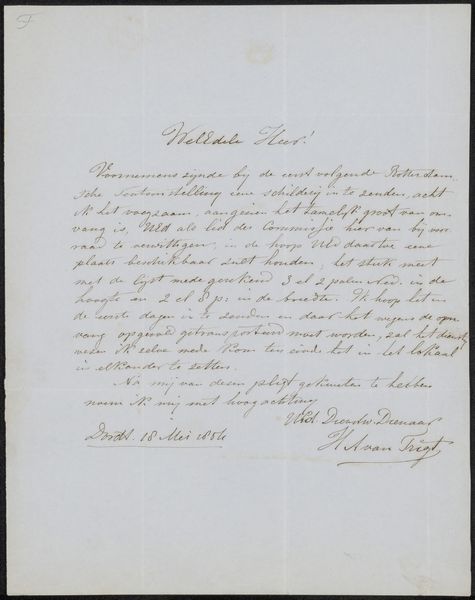
Copyright: Rijks Museum: Open Domain
Curator: Here we have "Brief aan Ary Johannes Lamme" by Robert van Eijsden, dating between 1822 and 1890. It's rendered in ink on paper, a personal letter, it seems. Editor: Immediately, I'm struck by the delicate script and the ephemeral nature of the handwriting; there's something very human about this. Curator: Indeed, the letter, penned with such care, reveals more than just words. Consider the materials: paper, likely handmade, each sheet carrying its own imperfections, its own story of production, from the rags used in the paper making to the goose quill and ink that gave birth to the handwritten word. Editor: Yes, the act of handwriting itself transforms it into a unique object. I notice how the flourishes and the consistency of the ink convey not only the message but also the character of the writer. It evokes a sense of intimacy, almost like reading the writer’s soul through his script. Curator: Van Eijsden clearly invested time and skill into this everyday practice of corresponding; he wasn’t merely scribbling. Writing such an intentional missive requires labor; paper, ink, light to see, time carved out. What we have here is the product of human endeavor. Editor: And that script—look at how consistent and elaborate the letters are; in this handwritten message I see echoes of cultural values—respect for language, education, tradition, and the weight of communication. Letters in those days held much more significance than today’s emails or text messages, acting as important visual symbols of connection and thoughtfulness. Curator: Absolutely. These objects – the letter, the ink, the paper – functioned within social and economic systems. What can the analysis of its raw materials tell us about the social environment it inhabited? Perhaps clues about literacy rates, class structures or simply access to resources? Editor: Precisely. The very act of composing a handwritten letter in this manner was itself symbolic. It speaks of intention, of taking the time to carefully communicate and foster a personal connection. Curator: So, through process and purpose, these objects allow us to unravel the narrative. Editor: It serves as a compelling invitation into another person’s inner world. We get a glimpse of a specific point in time through a specific individual’s message.
Comments
No comments
Be the first to comment and join the conversation on the ultimate creative platform.

